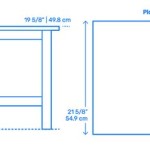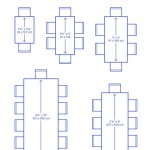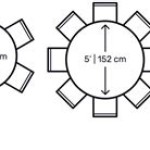Lacquer: An Enduring and Enchanting Finish for Table Tops
In the realm of furniture adornment, lacquer has captivated artisans and art enthusiasts alike for centuries. This lustrous and durable finish not only enhances the aesthetic appeal of table tops but also offers a plethora of practical benefits. Whether you seek a finish that exudes elegance, resilience, or a touch of exotic flair, lacquer holds the key to transforming your table into a masterpiece.
Lacquer's origins can be traced back to ancient China, where it was initially used to protect wood from moisture and insects. Over time, its decorative potential was recognized, and it became an integral aspect of Chinese furniture and art. Today, lacquer is produced in various forms, including traditional natural lacquers derived from the sap of the lacquer tree (Toxicodendron vernicifluum) and modern synthetic lacquers that offer similar properties.
Understanding the Types of Lacquers
When it comes to lacquering table tops, two main types emerge:
- Traditional Lacquers: These are obtained from the sap of the lacquer tree and are renowned for their exceptional durability, water resistance, and rich, warm hue. Applying traditional lacquers requires patience and skill, as multiple layers are applied over a long period to achieve the desired depth and sheen.
- Synthetic Lacquers: These are chemically engineered to mimic the properties of traditional lacquers but are often more affordable and easier to apply. They offer a wide range of colors and finishes, allowing for greater customization to match your décor.
Benefits of Lacquered Table Tops
Lacquered table tops offer a myriad of advantages:
- Exceptional Durability: Lacquer forms a hard, protective layer that resists scratches, heat, and moisture, ensuring that your table top remains pristine for years to come.
- Water Resistance: Lacquered surfaces are highly water-resistant, making them ideal for dining or workspaces where spills and stains are likely to occur.
- Versatile Colors and Finishes: Lacquers come in a vast array of colors and finishes, from classic black and white to bold hues and even metallic accents, allowing you to match your table to your existing décor or create a statement piece.
- Exotic and Artistic Appeal: Lacquered finishes evoke a sense of luxury and exoticism, adding a touch of Eastern elegance to your home.
Maintaining Lacquered Table Tops
To preserve the beauty and longevity of your lacquered table top, proper care is essential:
- Regular Cleaning: Use a soft, damp cloth to wipe down the surface regularly. Avoid harsh detergents or abrasive cleaners.
- Protection from Heat and Chemicals: Place hot pots or dishes on a trivet or coaster to prevent heat damage. Avoid exposing the surface to strong chemicals, such as paint thinner or acetone.
- Repairs: If your lacquered table top becomes scratched or damaged, seek professional repair to restore its original finish.
Conclusion
Lacquer offers an enduring and transformative finish for table tops, combining aesthetic allure with exceptional durability and water resistance. Whether you opt for traditional or synthetic lacquers, this versatile finish will elevate your table into a work of art that will be enjoyed for generations to come. Embrace the beauty and practicality of lacquer and witness the timeless elegance it brings to your home.
.webp?strip=all)
Wooden Table Tops Finishes Effects

Bar Tops And Restaurant Tables What S The Best Finish To Use Popular Woodworking

Lacquer Or Polyurethane For Table Top Choosing The Best Finish

Refinishing Lacquer Table Top

High Gloss Table Acid Polished Lacquer Refinishing Veneered Top

Refinishing Tables Without Stripping

Table Top Stain Clear Coat Espresso Gloss Polyurethane Farmhouse Series 4 Of 5

Lacquer Vs Polyurethane When To Use Each Finish

Farmhouse Dining Table Makeover Remodelando La Casa
Lacquer Over Lumberjocks Woodworking Forum








